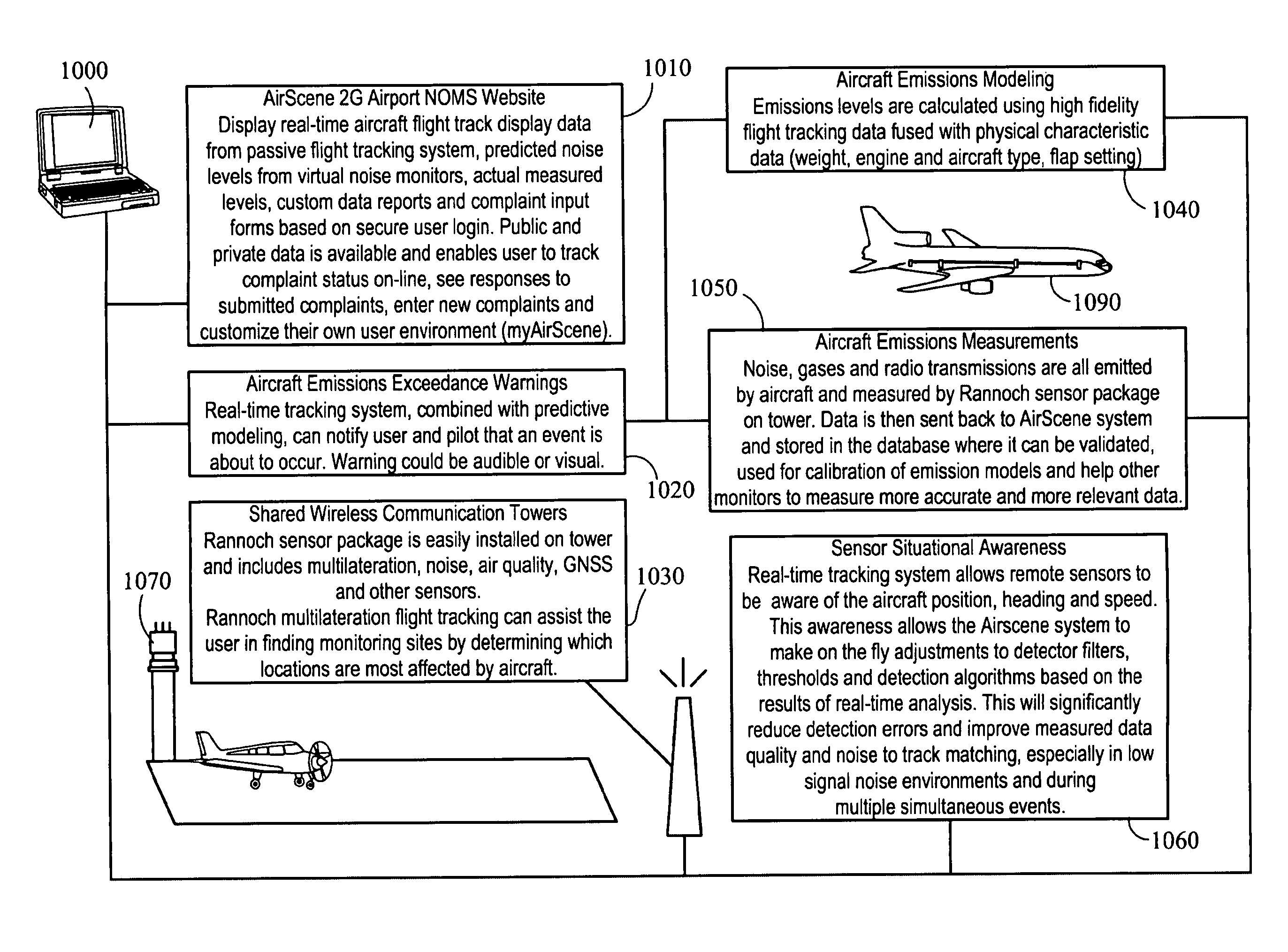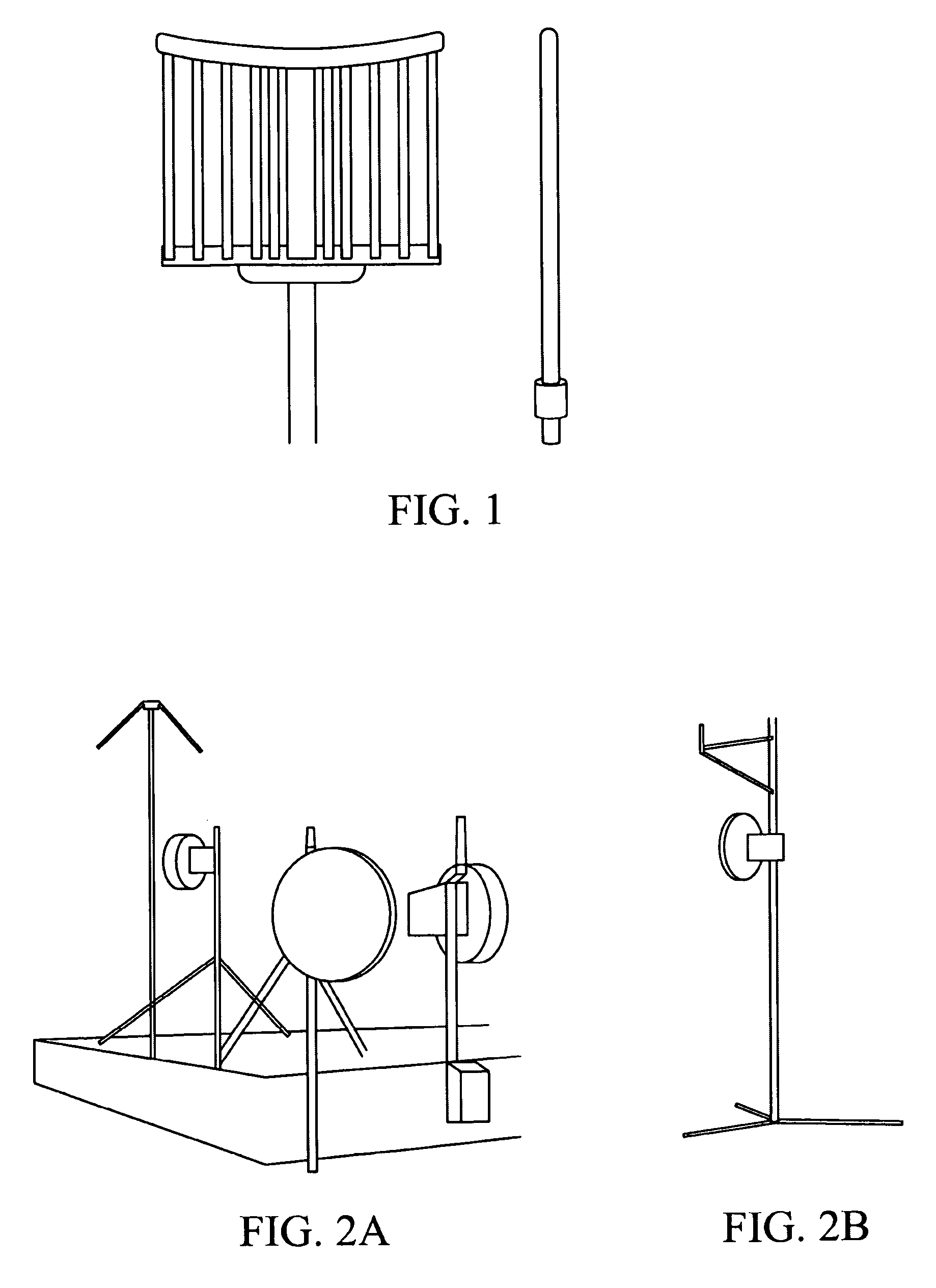Multilateration enhancements for noise and operations management
a multi-lateration and noise technology, applied in direction finders, directions using radio waves, instruments, etc., can solve the problems of false positives for noise violations reported by most noise monitoring equipment, and achieve the effect of reducing complexity and cos
- Summary
- Abstract
- Description
- Claims
- Application Information
AI Technical Summary
Benefits of technology
Problems solved by technology
Method used
Image
Examples
first embodiment
[0078]In the present invention, multilateration is used to provide more extensive flight tracking and aircraft identification than other passive Radar tracking technologies. Passive tracking techniques have been available for over 20 years. Megadata's Passur (www.passur.com, incorporated herein by reference) is installed at many airports, while a newer version called SkyTrak is marketed by Lochard Corporation (www.lochard.com, incorporated herein by reference) and is installed at a few airports. Both of these systems rely on the presence of conventional radar for coverage, so they cannot provide coverage when there is no existing radar coverage.
[0079]Since these techniques rely on existing radar systems for tracking, both the type of radar, and its configuration, may limit performance. For example, for a recent NOMS deployment in Boca Raton, Fla., the airport selected Lochard Corporation using a SkyTrak passive aircraft-tracking device. There were many requirements identified in the...
second embodiment
[0082]In the present invention, multilateration is used to overcome traditional constraints regarding placement of monitors for noise measurement throughout the community. Placement of noise monitors around airports has not been an exact science. Oftentimes monitors are placed within political boundaries, or in certain people's back yards, without any real scientific reason. For example, for a Part 150 Study for Seattle / Tacoma airport, the noise consultants asked the airport's committee members to pick sites from maps. As recorded in the committees minutes in 1999, (See, e.g., http: / / sus.airportnetwork.com / Committees%20Meeting%2010-24-02.pdf., incorporated herein by reference) noise consultant Paul Dunholter asked committee members to suggest areas for placement of noise monitors:
[0083]“Paul Dunholter, Project Acoustical Engineer, explained the purpose of the noise monitoring process. The primary tool for the noise analysis is the integrated noise model which generates the noise con...
third embodiment
[0085]In a third embodiment, multilateration is used to perform noise monitor event triggering based on real-time noise calculation and flight tracking. Triggering noise monitors acoustically is difficult in areas of high ambient or low source level noise. For example at the 129th ASA Meeting in Washington, D.C. in May 1995, Mr. Nathan B. Higbie gave a presentation on the subject as follows:
[0086]“The agreements negotiated for the new Denver Airport present an interesting example of how legal considerations can govern how noise measurements are made. The agreements stipulate certain noise limits on communities surrounding the airport. These limits are expressed in aircraft Leq(24), and are placed at 102 points, some over 15 miles away. There are financial penalties if any values are exceeded for a year. A signal-to-noise measurement problem resulted since modeled values of the aircraft Leq(24) were lower than measured Leq(24) community noise. The problems that needed solving were de...
PUM
 Login to View More
Login to View More Abstract
Description
Claims
Application Information
 Login to View More
Login to View More - R&D
- Intellectual Property
- Life Sciences
- Materials
- Tech Scout
- Unparalleled Data Quality
- Higher Quality Content
- 60% Fewer Hallucinations
Browse by: Latest US Patents, China's latest patents, Technical Efficacy Thesaurus, Application Domain, Technology Topic, Popular Technical Reports.
© 2025 PatSnap. All rights reserved.Legal|Privacy policy|Modern Slavery Act Transparency Statement|Sitemap|About US| Contact US: help@patsnap.com



